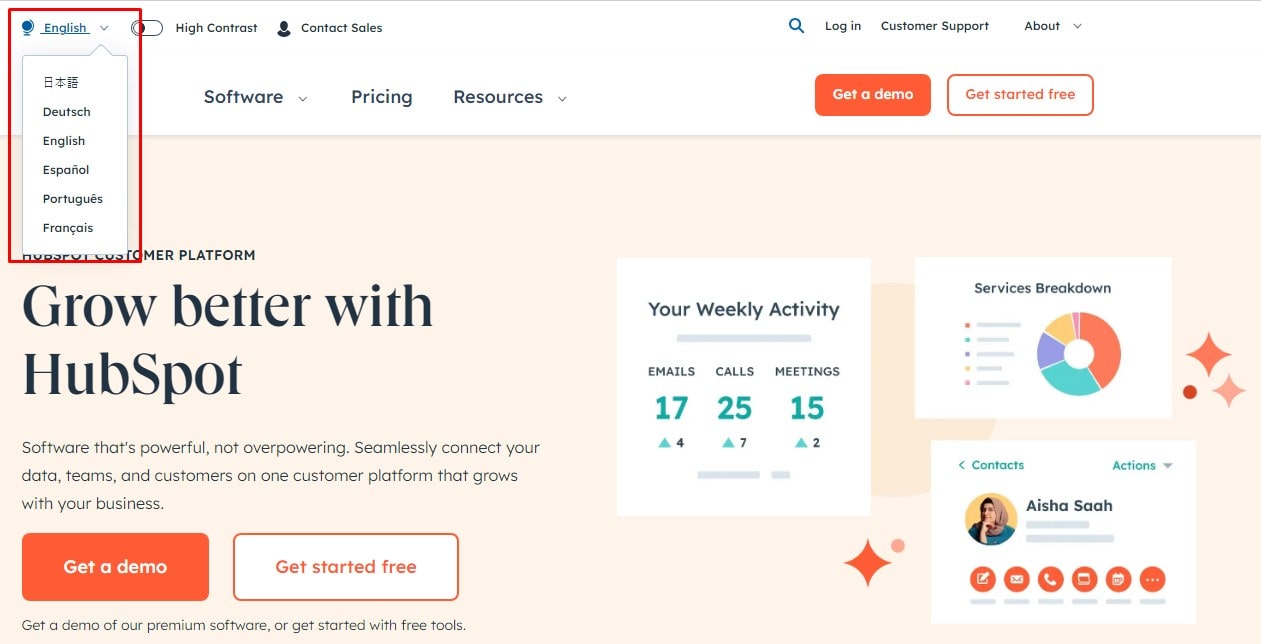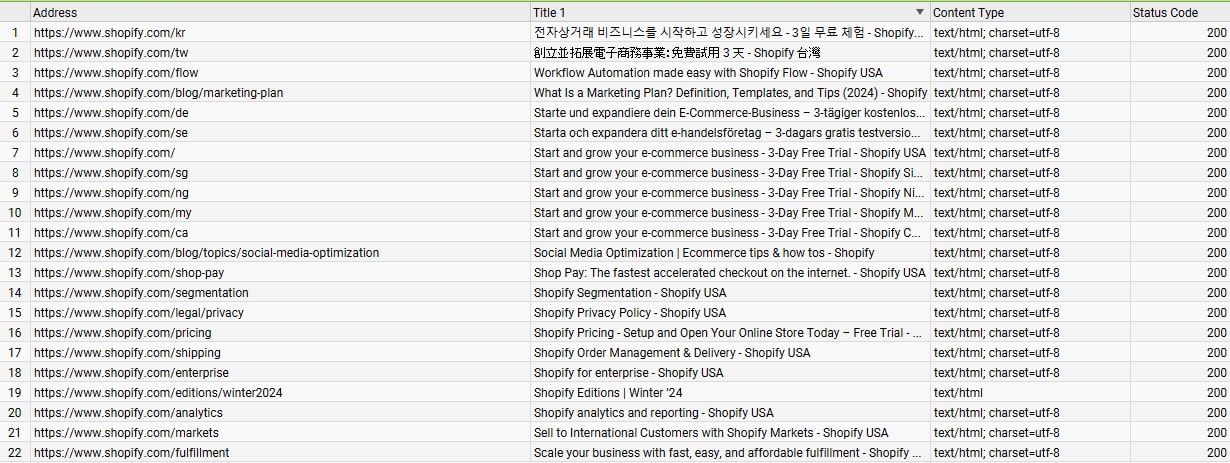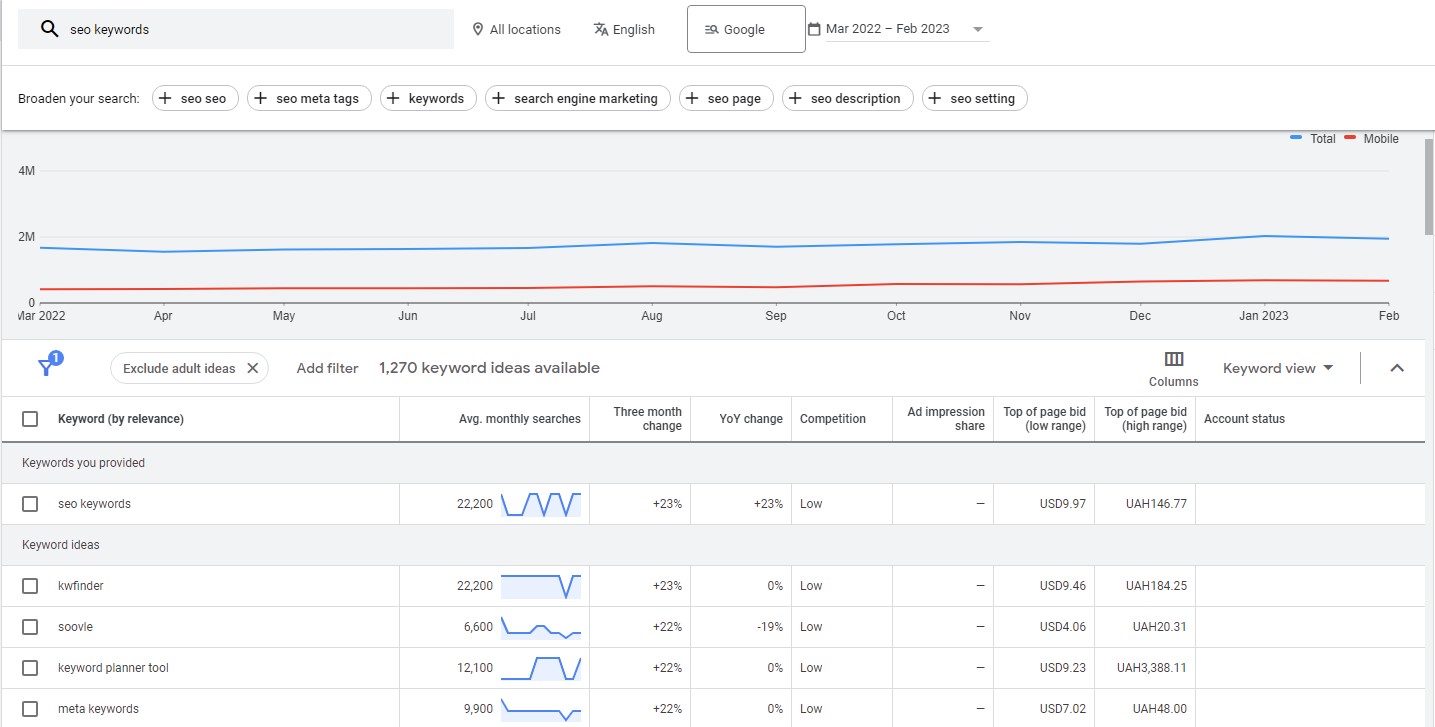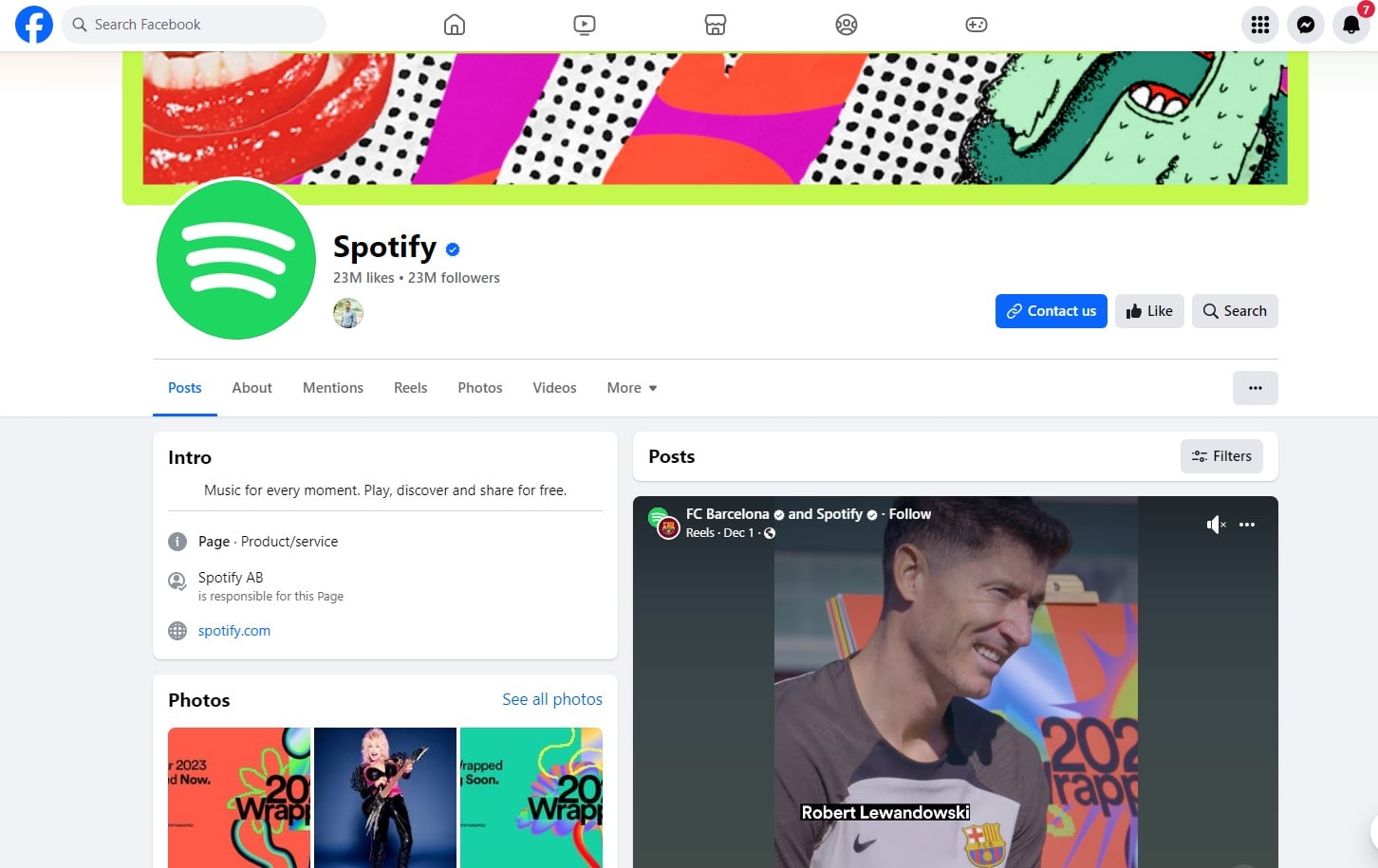Ever ordered a Bratwurst in France or a croissant in Germany? While language constraints can be humorous, they are not when they limit the worldwide reach of your website. Multilingual SEO then becomes useful. More than just translating words, connecting with a large audience in a language they value and understand calls for respect. Plerdy knows this well and provides solutions to improve user experience and website analysis across several languages. We will explore the subtleties of multilingual SEO in this post so that your website talks not just several languages but also clearly.
Understanding Multilingual SEO

Websites have to change to fit the many language environments of the digital world, much as a seasoned visitor learns to negotiate several cultures. Multilingual SEO therefore takes front stage here. It’s about structuring your website to appeal to many languages and cultures, not only translating material.
Understanding Multilingual SEO
Multilingual SEO is making sure your website ranks highly in search engines all around by optimizing its material for several languages. This approach offers doors to new markets and audiences and breaks language restrictions. It’s about knowing and using language’s subtleties to make sure a worldwide audience will not only view but also value your material. Effective multilingual SEO depends on knowing the cultural background and search behavior of your target audience in many locations, claims Moz, a leader in SEO.
Definition of Multilingual SEO
Multilingual SEO is fundamentally improving website content in several languages. This covers translating meta tags and keywords and adjusting material to fit the culture of the target audience. This is a deliberate strategy that guarantees that, in every language, the core of the message is expressed successfully going beyond mere translation.
Why Multilingual SEO is Crucial for Global Reach
In a world when over half of the web material is in English yet only roughly 25% of the internet population speaks the language, multilingual SEO has to be taken into account. It helps businesses enter fresh markets. Websites can greatly improve their visibility, user interaction, and, finally, their global reach by maximizing for several languages.
Learning and using multilingual SEO is a technical chore as well as a trip into the core of many languages and cultures. This is a calculated action to guarantee that your website speaks to the several audience members. Using Plerdy’s analytics tools helps you monitor and improve user involvement across several language versions of your website, so making this journey more enlightening. Your website is your ambassador in the digital world; with multilingual SEO, it will help you to present yourself on the international scene.
Effective URL Structure for Multilingual Sites

Think of URLs in multilingual websites as your worldwide GPS coordinates; they direct your readers to the correct language source. A good multilingual SEO plan is built mostly on an efficient URL structure. It’s about guiding consumers to your website as well as to a version of it written in their tongue.
Effective URL Structure for Multilingual Websites
Your multilingual website’s URL should be logical, unambiguous, and reflect the language content it hosts. Clear search engines and user navigation help you to index your stuff in several languages.
Pros and Cons of Different URL Structures
- Country Manual Domains of Top Level (ccTLDs): Strongly tells people and search engines that your website is locally targeted by using country-specific domains (like.fr for France and.de for Germany). It builds local trust and presence. Managing several domains, however, can be expensive and laborious in terms of individually developing domain authority.
- Generic top-level domain-based subdirectories (gTLDs): Under this method, you create language-specific subdirectories on your primary domain—such as website.com/fr/for French. It streamlines management and groups domain authority. The drawback is possible need for more precise area targeting and difficulties in location flexibility hosting.
- Domains with gTLDs: Setting up and running different languages using subdomains—like fr.website.com—is simpler. They let one create localized content without having to buy new domains. The disadvantage consists in possible user confusion and the necessity to establish authority for every subdomain.
Search Engine Journal offers analysis of how these systems affect user experience and SEO.
Best Practices for URL Optimization
Optimizing URLs for multilingual websites calls for consistency and clarity. Apply a consistent framework across all languages to guarantee clear URL language indicators—that is, “en” for English and “es” for Spanish. Target URLs by language and region with hreflang tags. Simplify URLs; steer clear of complicated structures or pointless restrictions.
The multilingual SEO scene depends critically on a good URL structure. It’s like giving your worldwide guests a well-organized road map so they may swiftly and effectively locate the materials in their language. Your multilingual website’s SEO performance and user experience will be much improved by carefully selecting your URL structure and adhering to best standards for optimization. In the digital sphere, simplicity and clarity help greatly to close linguistic gaps.
Leveraging Hreflang Tags for Targeted SEO

Imagine talking to a worldwide audience and everyone receives your message in their native tongue. This is the basis of using hreflang tags for focused SEO. It’s like a digital babel fish, converting the meaning of your web pages to fit many readers all around.
Leveraging Hreflang Tags for Targeted SEO
Reflang tags enable search engines to provide readers the correct URL in many languages or locales, therefore facilitating access. Powerful tools in your SEO toolkit, these little bits of code guarantee that your material reaches the correct audience in the correct language.
Understanding Hreflang Tags
Hreflang tags signal search engines the language or locale of your content. For websites with similar material available in several languages specifically, this is crucial. These elements let search engines like Google know which version of a page to show depending on user location and language selections. This reduces linguistic or geographical mismatches in search results, improving user experience as Google’s Webmaster Central Blog notes.
Implementing Hreflang Tags Effectively
Hreflang tags must be included in the HTTP header, the sitemap of the website, or the head section of every web page if you want to make good use of them. They should faithfully represent optional regional codes (ISO 3166-1 Alpha 2) and the language (ISO 639-1 form). On every page, keep in mind to include a self-referential hreflang tag and a default tag (“x-default”) for users not fitting the designated locales. This guarantees appropriate search engine indexing and helps to prevent any uncertainty.
Your covert weapon in multilingual SEO is hreflang tags. They guarantee that they will always find the version of your material fit for your users wherever they are or what language they speak. Though it seems like a little step, using hreflang tags will help your website to be really worldwide. These tags will let you boldly present yourself knowing your audience will grasp your work.
SEO and Website Localization: A Global Strategy

In the digital terrain of today, good communication with your audience extends beyond simple translating to include cultural connection. Ensuring your content is received and culturally appropriate across many languages and countries depends critically on SEO and website localization.
SEO and Website Localization
A really worldwide reach depends on SEO and website localization. There is more complexity in this procedure than in just translating. It’s about customizing the content of your website to mirror the linguistic subtleties and cultural nuances of your audience.
Integrating SEO with Content Localization
Content localization and SEO address more than just direct translation. They center on cultural communication. Localizing content for SEO helps you to fit local customs, values, and colloquialisms, therefore ensuring that the message of your website will be resonant culturally. Studies reveal, for example, that most consumers would rather buy in their native tongue. Integration of SEO with localized content can improve website user involvement, bounce, and conversion rates.
Quality Translation for SEO-Optimized Websites
Effective SEO for multilingual websites depends critically on high-quality translating. It’s about keeping the original intent, style, tone, and context, not only about language conversion. Poor translations can cause misunderstandings or sometimes anger your readers. Although programs like Google Translate offer a basic foundation, human translators are essential for really capturing the core of your message—especially for web-based SEO-sensitive material. They know cultural quirks and idioms that automated systems sometimes ignore.
SEO, Website Localization, and Beyond
Content localization and translation go beyond simple search engine optimization; they are fundamental components of a worldwide approach. Localizing material on your website helps you to communicate experiences and emotions rather than just words, therefore strengthening the resonance and connection of your brand wherever. Effective communication in the global market is speaking in a language that is not just linguistically accurate but also culturally calibrated. Your website becomes a friendly worldwide hub encouraging readers from many cultures in a language they embrace by means of well-localized and translated content, therefore improving the SEO and global appeal of your website.
Keyword Optimization Across Languages

Imagine writing a message that, in words and meaning, speaks to people everywhere. That is the craft of multiple language keyword optimization. It’s like discovering the secret to open the door to many civilizations, so making sure your material appeals to a worldwide readership.
Keyword Optimization Across Languages
Multilingual SEO depends critically on optimizing keywords across several languages. It’s about knowing and using the most pertinent and successful keywords for every language variant of your website.
Keyword Research for Multilingual SEO
Good keyword research in multilingual SEO calls for knowledge of the particular search patterns and preferences of every target market. More is required than simply translating English keywords straight into another tongue. People’s search for many languages might be influenced by regional dialects, local lingo, and cultural subtleties. Google’s Keyword Planner, per Search Engine Land, may offer popular search terms in many languages and regions.
Implementing Multilingual Keywords
Strategic application of the appropriate keywords for each language comes next once you have found them. This covers including naturally including them into the text, titles, meta descriptions, URLs of your website. Maintaining context and relevance, the aim is to maximize material for search engines in every language.
Learning keyword optimization in several languages is like learning linguistics and marketing simultaneously. It’s about both literally and culturally speaking the language of your worldwide readership. When done correctly, it increases user involvement by providing material that speaks to them in their language and raises the visibility of your website in search engines all around. So explore the many worlds of languages with thorough study and deliberate keyword use. Your worldwide audience wants to hear you in their tongue.
Enhancing User Experience in Multilingual SEO

Using a website should be more like a seamless trip than a treasure hunt. Improving user experience (UX) in multilingual search guarantees that trip is equally flawless in every language. It’s about providing your audience with a customised, simple experience and communicating in their language.
Enhancing User Experience in Multilingual SEO
Multilingual search engine optimization user experience transcends simple translating. It guarantees that users from all backgrounds may interact with your website easily by including the whole feel, navigation, and accessibility of a website in several languages.
Technical Aspects of User Experience
Technical wise, website speed is critical. 53% of smartphone users reportedly stop visiting websites that load more than three seconds, according Google. The user experience will be better if images are optimized, browser caching is used, CSS and JavaScript is minimized. Your website needs to be mobile-friendly as cell use increases all around.
Design and Navigability for Multilingual Users
Design and navigability depend on a clear, simple layout that fits several languages. This covers correctly employing language-specific characters and offering easily available language selection choices. Different language versions’ consistent layouts help to lower cognitive burden and improve user familiarity with your website. As Nielsen Norman Group underlined, usability depends critically on design consistency.
Improving user experience in multilingual search engine optimization is about making your website a friendly location for every visitor, from many languages. It’s about creating bridges across linguistic and cultural gaps so every user feels appreciated and understood. By doing this, you improve your search engine results page and create a worldwide brand community. In the realm of multilingual search engine optimization, a wonderful user experience is the global language spoken by all.
Social Media Integration for Multilingual SEO

Social media is more than simply a forum for communication in the digital age; it’s a multilingual megaphone that magnificently accentuates the voice of your brand anywhere. Including social media into your multilingual SEO plan is similar to inviting everyone to a worldwide party where everyone speaks their native tongue.
Integrating Social Media in Multilingual SEO Strategy
In a multilingual environment particularly, social media’s influence on SEO has become a crucial component. Engaging a large audience in a language they are comfortable with will help your SEO efforts to be more successful.
Social Media for Global Audience Engagement
Engaging a worldwide audience on social media calls for material that speaks to people from many backgrounds. Crucially is knowing the cultural quirks and tastes of your varied audience. Geo-targeting tools on sites like Facebook and Twitter let material reach particular language-speaking groups. According to a Hootsuite survey, social media is used by over 3.8 billion individuals worldwide, hence it is a quite useful tool for worldwide reach. Customizing your social media materials for several languages will boost brand awareness and interaction.
Optimizing Social Media Content for Multilingual SEO
Consistency in brand message across all languages is essential when optimizing social media for several languages. Content development with native speakers guarantees the message stays real and relevant for culture. Moreover, a mainstay of social media marketing, hashtags should be tailored to boost awareness in local searches. Google Trends and other tools can reveal common terms and hashtags across many languages.
Social media should be part of any multilingual SEO strategy if you want your brand to be personable and reachable anywhere. It’s about grasping their culture and speaking their tongue. This helps you to establish a worldwide community around your brand and enhance its reputation. Every like, share, and comment in any language in the huge realm of social media brings one closer to a more varied audience. Social media is the link that ties your brand to the globe in this digital age.
Final Thought
Starting the multilingual search engine optimization trip is like opening a universe of possibilities. It’s about transcending boundaries, tying civilizations together, and communicating in tongues that appeal to people all around. This handbook marks only the start. More educational Plerdy blog entries will expand your expertise with digital marketing. Every thing highlights the always shifting landscape of digital marketing and SEO. Remember that Plerdy is here to boost your adventure as you explore more; she provides tools and insights that turn obstacles into digital victories. Allow Plerdy to be your compass over the huge digital terrain.
